
Pest Library
What You Need To Know About Pests
Discover effective pest control solutions in just minutes. A&M Quality Pest Control offers our Pest Library to help customers learn more about common pests and the side effects of an infestation. The library includes information on where you will typically find pests, the damages they cause, and how to get rid of them for good. Read on to learn more about our area's toughest pest and why a professional pest control plan is your best option for protecting your home or business from pest problems!
Ants
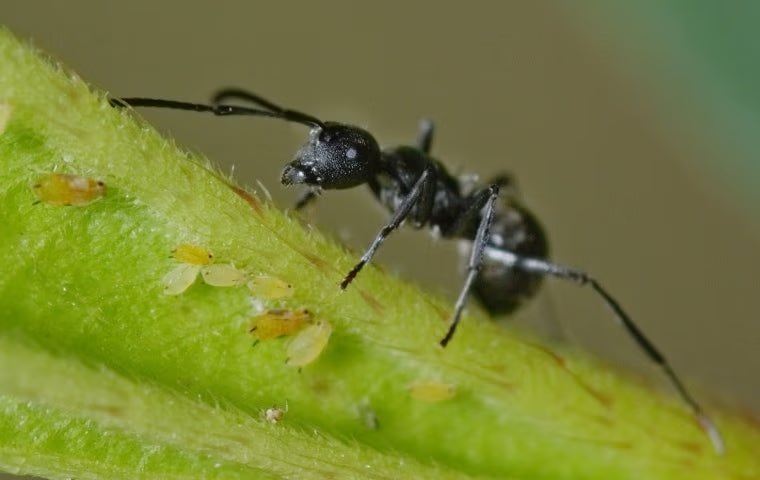
Ants are social insects that rely on different roles of the colony to survive. Colonies contain queens, which are reproductive females, reproductive males, and workers, which are infertile females. Worker ants use pheromones to attract other members of their colony to communicate things such as food and danger. This communication mechanism is why ants often infest homes in large numbers.
You might hear the term sugar ants used. The term does not refer to one specific type but encompasses many species attracted to sweet foods. Carpenter ants and odorous house ants are indoor sugar ants because they are known to infest homes and other buildings. All sugar ants are capable of contaminating food but the dangers they bring varies:
- Carpenter ants are one species found in Long Island. They are wood-destroying pests measuring between 1/2 and 5/8 of an inch long and are red, black, or a combination of the two. These ants don't eat wood but build intricate galleries in soft, usually inside water-damaged or decaying wood. Carpenter ants can pose a significant threat to homes as they tunnel through their structures.
- Odorous house ants are another species that you might encounter. This species ranges between 1/16 to 1/8 of an inch long. They are brown or black and get their name from the foul, rotting coconut smell they produce when crushed. While they can be unpleasant, odorous house ants aren't considered dangerous.
To keep ants out of your home, you should make sure eating areas are clean of food debris, eliminate excess moisture, inspect your home's exterior, and seal entry points. You can call us at A&M Quality Pest Control to learn more ant prevention tips and learn about our residential pest control offerings, which cover unwanted pests like ants.
Helpful Articles
- Long Island Homeowners' Ultimate Ant Control Guide
- The Key To Total Ant Control For Your Suffolk County Home
Fleas & Ticks
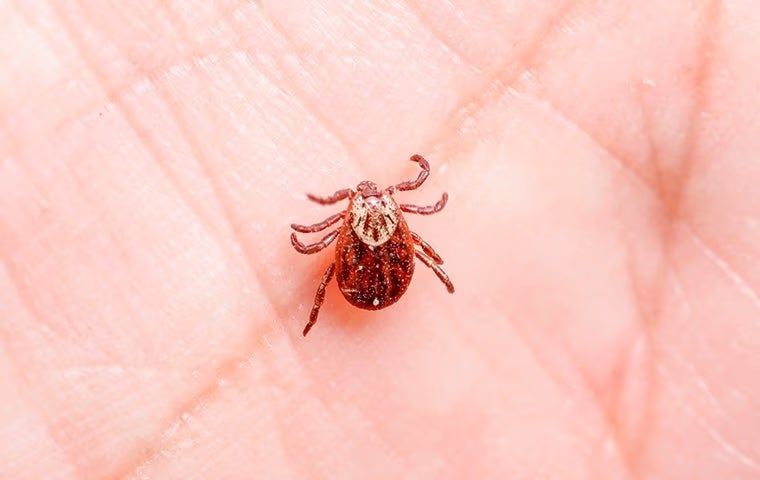
People often group fleas and ticks because they are both small external parasites that attach themselves to mammals.
- Fleas are smaller than ticks at 1/12 to 1/6 of an inch long. They are dark reddish-brown with flat bodies, six legs, and antennae. Although wingless, fleas are powerful jumpers that prefer animals with hair or fur because they can better attach themselves to these animals using the bristles on their bodies.
- Ticks come in various colors and sizes, depending on the species. In general, ticks have flat oval-shaped bodies that become swollen after a blood meal. Adult ticks have eight legs and no antennae. Like fleas, ticks are wingless, but they are not strong jumpers.
Both of these parasites are responsible for spreading diseases. Different species of fleas can lead to tularemia, plague, typhus, tapeworms, and cat-scratch fever. While ticks are known to transmit Lyme disease, tularemia, Rocky Mountain spotted fever, ehrlichiosis, babesiosis, and many more.
It is not only homes with pets that need to worry about fleas and ticks, as these pests can affect any home. The best way to prevent fleas and ticks is by keeping your yard maintained. You should also put pets on flea and tick preventatives with assistance from a veterinarian and contact professional pest control experts for ongoing support.
Helpful Articles
- How To Keep Dangerous Ticks Away From Your Suffolk County Yard
- How To Tell If Your Long Island Home Has A Flea Infestation
Mosquitoes
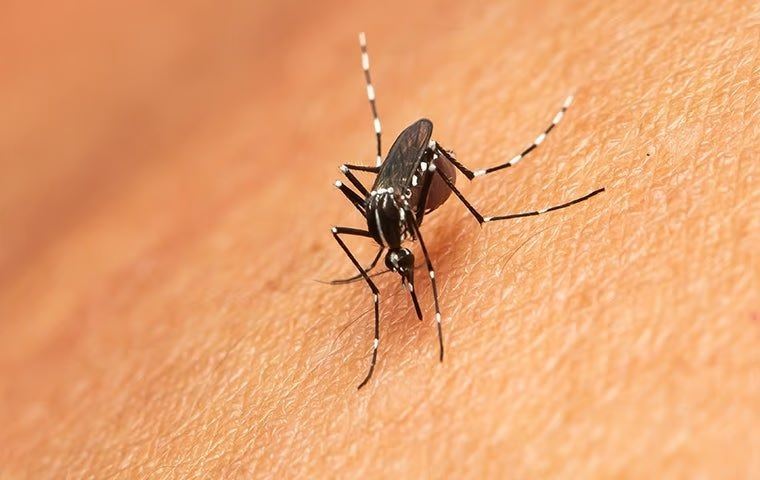
Long Island residents know just how annoying mosquitoes are. These pests make it challenging to enjoy the outdoors from spring through fall. Mosquitoes are slender flying insects with six long, delicate legs. These pests don't do well in direct sunlight because they can become dehydrated quickly. Because of this, mosquitoes will hide in shaded areas during the afternoons.
While these pests are fragile, they are also dangerous because of the many diseases they spread. In the United States, mosquitoes can transmit Zika, West Nile virus, chikungunya, and dengue.
Mosquitoes only need a small amount of standing water to reproduce, so any property can have high populations of these unwanted pests. Removing stagnant water is one of the best ways to reduce mosquitoes around your property. You should also cut back foliage and remove debris to reduce shaded areas.
Keep mosquitoes populations under control and enjoy spending time outside with the help of A&M Quality Pest Control.
Helpful Articles
Rodents
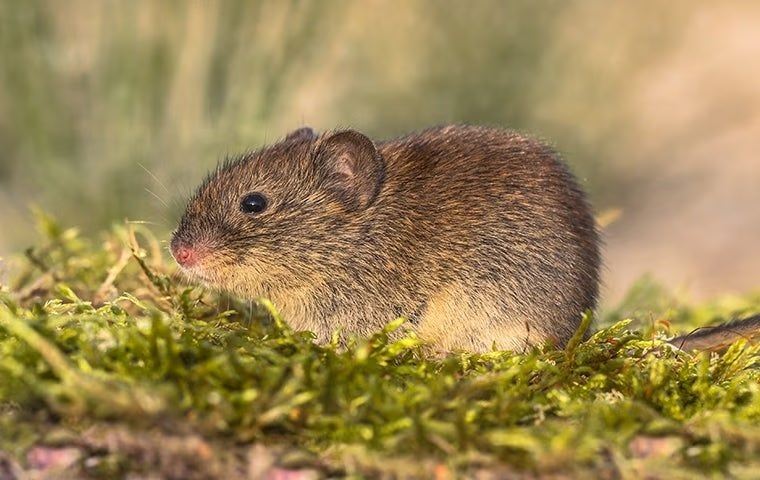
From mice to rats and others that live underground, rodents are a big problem for Long Island residents. Field mice, Norway rats, moles, and voles are the most common species in our area.
- Field mice have reddish-brown fur with a light color underbelly, large eyes, and ears, and are about 4 inches long, excluding their long tail.
- Norway rats are also known as brown rats and are large, about 16 inches long, including their tail. They are grayish-brown to black.
- Moles range between 6 to 8 inches long. They have velvety brown fur, large clawed paws, and small eyes hidden by fur. Moles are not rodents, although their destructive tendencies are similar.
- Voles have brown or gray fur. They have short legs and a stocky body, ranging between 5 to 8 inches in length.
Mice and rats will infest homes to build nests, cause damage, contaminate food and surfaces, and spread dangerous pathogens including hantavirus, rat-bite fever, salmonella, leptospirosis, typhus, and many more. They can also spread fleas, ticks, and other parasites.
Moles and voles create burrows and tunnels underground, which damage lawns, trees, gardens, and landscaping. Because these pests live mostly underground, they aren't considered dangerous to people, but their damage to properties can be costly.
Make your home less attractive to rodents with these tips removing food sources. Keep your yard clear of fallen fruit and bird feeders, use garbage cans with tight-fitting lids, use food storage containers with lids that seal, and keep your home free of crumbs.
Keep rodents from invading your house by removing entry points. Seal holes in the foundation, exterior walls, and roofline, repair any damaged screens, use vent and drains covers, and install chimney caps.
Helpful Articles
- Why You Should Call The Pros About Mice In Your Long Island Home
- Moles In Suffolk County Can Be Hard To Control
- How To Easily Get Rid Of Mice Around Your Home
- Help! There Are So Many Rats On My Long Island Property
Stinging Insects
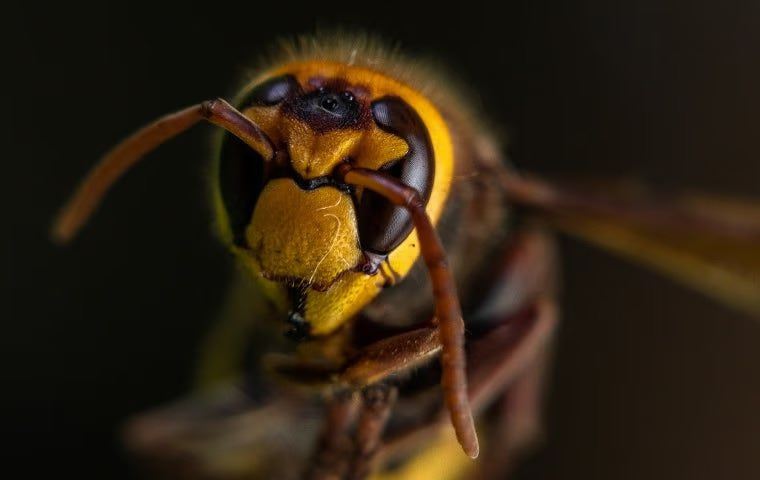
The term stinging insect refers to pests such as hornets and wasps. There are several types of hornet and wasp species common on Long Island properties. These species include:
- Bald-faced/White-faced hornets
- Cicada killers
- Digger wasps
- Yellow jackets
Wasps have a narrow waist and a more slender appearance compared to hornets. Some species are more aggressive than others, attacking any people or animals that threaten their nests. Hornets and wasps can sting multiple times because they have smooth stingers. When they sting, these pests inject venom. The venom from hornets is more painful than wasp venom, but some people can be allergic to any stinging insect venom.
These pests can build their nests all over a residential property, even inside walls. You can prevent this pest from becoming a problem by using these prevention tips:
- Use garbage cans with tight-fitting lids, cleaning them out regularly to remove residue.
- Clean of spills of sugary drinks and rinse bottles before recycling them.
- Reduce flowering plants on your property.
- Make sure there are no cracks or entry points into your home.
One of the best ways to keep your family safe from stinging insects in Patchogue, NY and the surrounding areas is with ongoing professional pest control. Experts can inspect for newly formed nests and remove them before they grow larger. Let our team of experienced technicians at A&M Quality Pest Control handle stinging insects on your property to keep you and your family safe.
Wood-Destroying Insects
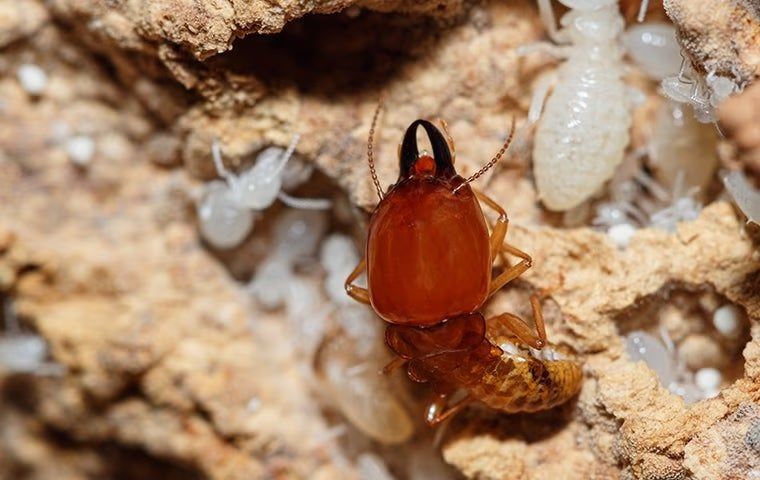
When people think of wood-destroying insects, termites are the first that come to mind. While termites are a prevalent threat to Long Island homes, powderpost beetles are another wood-destroying pest that you shouldn't overlook.
Termites are wood-destroying pests that cause billions of dollars in damage each year because they can move into a property and go unnoticed for a long time. As social insects, termites live in large colonies. Termites can infest many different types of wood, but the most common termites in our area infest water-damaged and decaying wood. Older homes are more susceptible to termites, but any home can experience them, especially if a leak or moisture issue goes unresolved.
Termites are often associated with older homes with water-damaged or decaying wood, but some species consume untreated dry wood. No matter the termite you are dealing with, it can cause extensive damage to any property. In some cases, the damage caused by these pests can leave home structurally weak and dangerous for people. An effective termite control plan is highly recommended to prevent costly structural damage in your home.
Powderpost beetles usually get into homes through previously infested wood from lumber yards. These pests can also infest wood stored outside or in the reclaimed wood from barns. Females lay their eggs inside the wood, and larvae can take years to become adults, eating away at the wood as they develop.
What makes wood-destroying insects worse is that they go unnoticed for some time, enabling them to destroy homes and other structures before being treated. The best way to prevent wood-destroying pests is with yearly inspections.
A&M Quality Pest Control experts can assist with wood-destroying pests like termites and powder post beetles; call today to find out more!